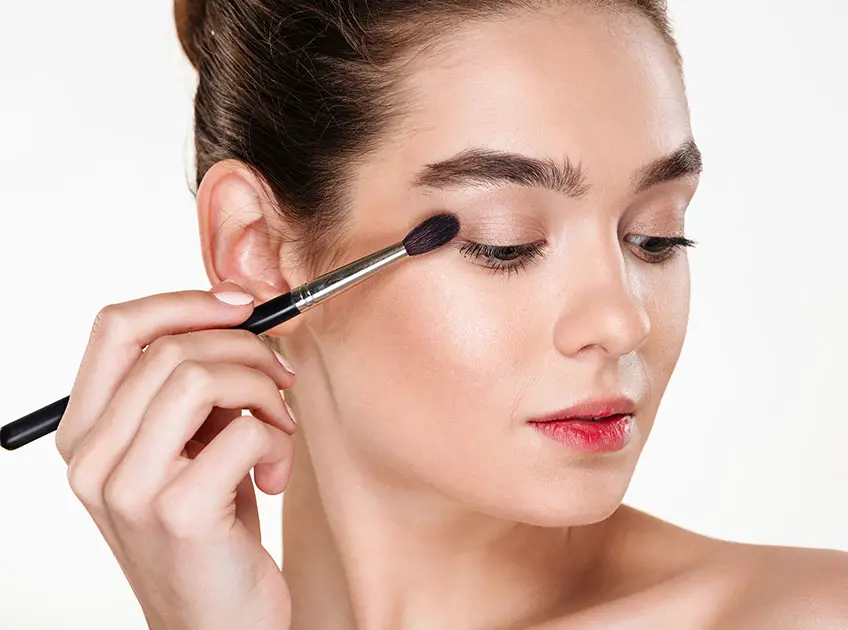
Important: This article is for informational purposes only. Please read our full disclaimer for more details.
Eyeshadows form a crucial part of everyday makeup, because of their versatility to be used as a highlighter and blush. If your eyeshadow has a satin or matte finish, it can be a perfect blush. These are often more pigmented compared to blushes so it needs to be applied carefully.
Article Contains
How to Use Eyeshadow as Blush
1. Powder Eyeshadow
- Select the right eye shadow for your skin tone.
- Dip your blush brush in the eye shadow palette and tap it to remove excess product.
- Apply the blush in a circular motion on your cheeks up to your ears.
- Take a makeup sponge or a cheek highlighter brush, and dip in the cream eye shadow.
- Tap the brush on your cheeks instead of sweeping them.
- Blend it thoroughly unlike the powder eye shadow to get a natural look.
Tip: Don’t use a lot of cream eye shadow as a blush as it will degrade quickly but a little bit will go a long way.
Blush Based on Skin Type
- You can opt for shimmer shadow but that won’t create a natural look like the matte shadows. So, the shimmer is a good choice when you are attending parties.
- If you have dry skin, go for cream eyeshadows as it results in long-lasting coverage. Similarly, powder eyeshadows are best for oily skin.
While using an eyeshadow as a blush, pick a lip color that blends with your skin tone, clothes and other accessories, to create a perfect look. Since eye shadow is heavier than blush with a higher degree of opaqueness, it is important to thoroughly remove your makeup at the end of the day to avoid breakouts.
You Might Also Like:
- 7 Best Eyeshadows For Brown Eyes And Fair Skin
- 7 Best Eyeshadows For Oily Eyelids
- 7 Best Eyeshadow Palettes For Blue Eyes And Fair Skin
- How Long Do Eyeshadow Palettes Last
- How to Apply Liquid Eyeshadow – The Ultimate Guide
- Milani Eyeshadow Primer Review
- UCANBE Pro Glitter Eyeshadow Palette Review
- How to Apply Eye Shadow by Eye Shape?
- How To Apply Eyeshadow Like A Pro
- Can You Use Eye Shadow As Contour
- Eye Makeup Tips for Beginners – Step by Step Guide















